01
The "piano" in Orense Street
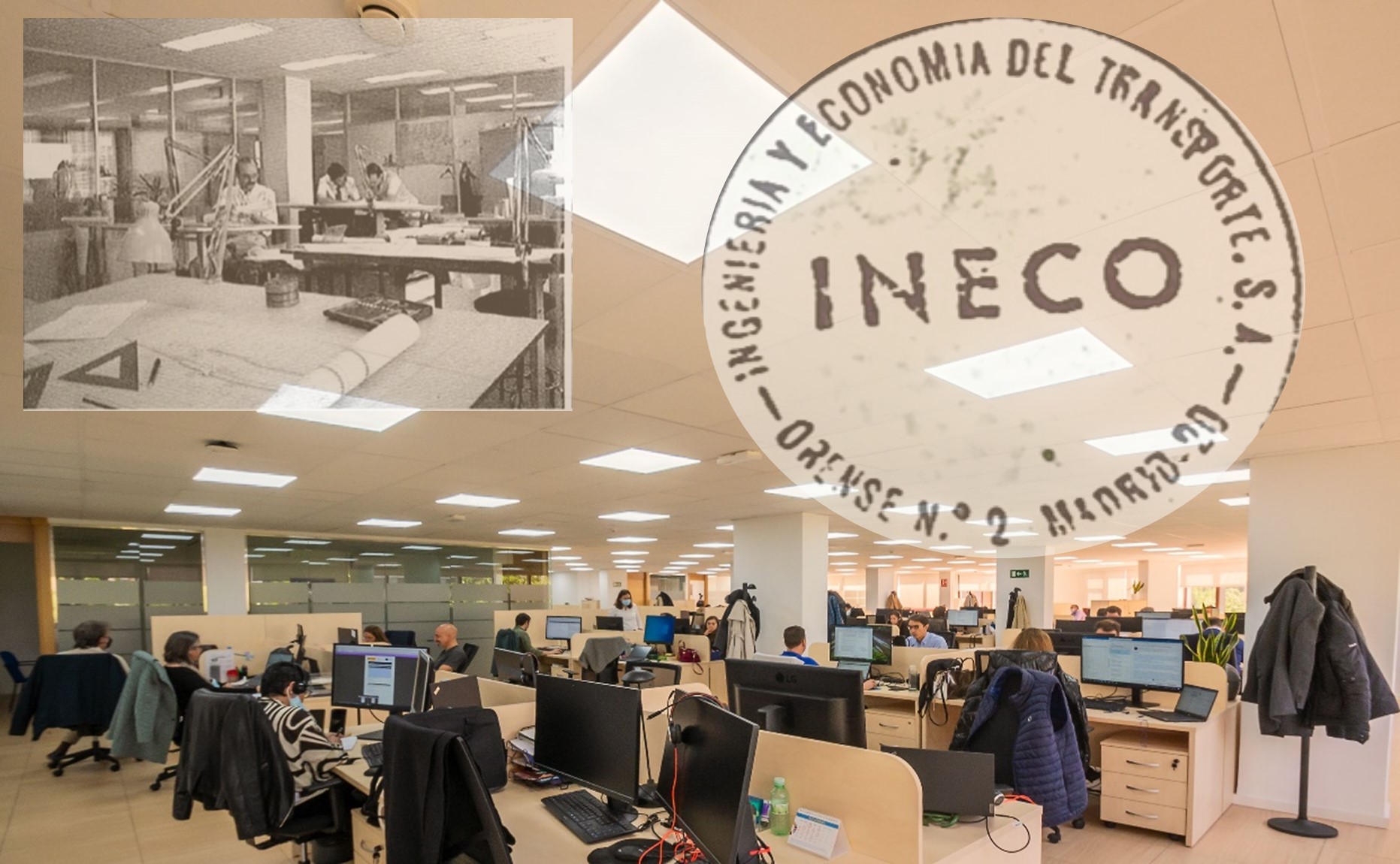
2023: Nearly 100 Ineco professionals work in the Technical Office supporting the Ministry of Transport, Mobility and the Urban Agenda to ensure that the funds of the Recovery, Transformation and Resilience Plan (RTRP) reach citizens, companies and administrations. It is one of the 76 offices that the company currently has in Spain, in addition to more than 20 branches abroad and two subsidiaries in Mexico and Brazil. The RTRP office opened in 2021 at number 81 in Madrid's central Orense Street, a significant location for Ineco, as it was first set up there more than 50 years ago, and where a historic project was carried out.
In 1972, the growing staff, then numbering 26, moved from its first headquarters at 44 Santa Isabel Street to 2 Orense Street. That year Renfe commissioned Ineco to carry out the first study of a high-speed line in Spain: Madrid-Zaragoza-Barcelona-Port Bou. Ineco's engineers nicknamed it "the piano" because of the large number of large-format tomes placed in huge project boxes reminiscent of a keyboard.
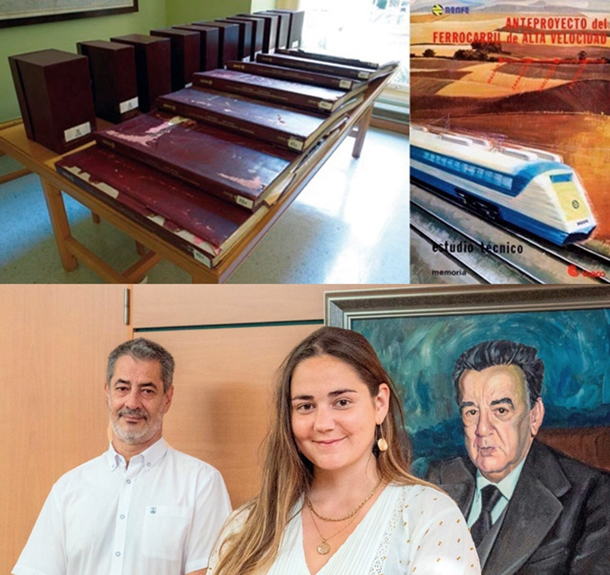
The 60-year-old draughtsman Julián de Antonio, who has been with the company for 44 years and is currently Ineco's longest-serving employee, perfectly remembers the offices in the central Madrid street, where he started working as a bellboy in 1979, when he was only 17 years old. "Ineco is my second
Miren Marzábal, 27, a lawyer who recently joined a staff of more than 5,500 professionals on five continents, does not hesitate to describe her first few weeks as "unbeatable", highlighting above all "the welcome from my colleagues, making me feel part of the team from the very first moment".
02
Vintage of '68
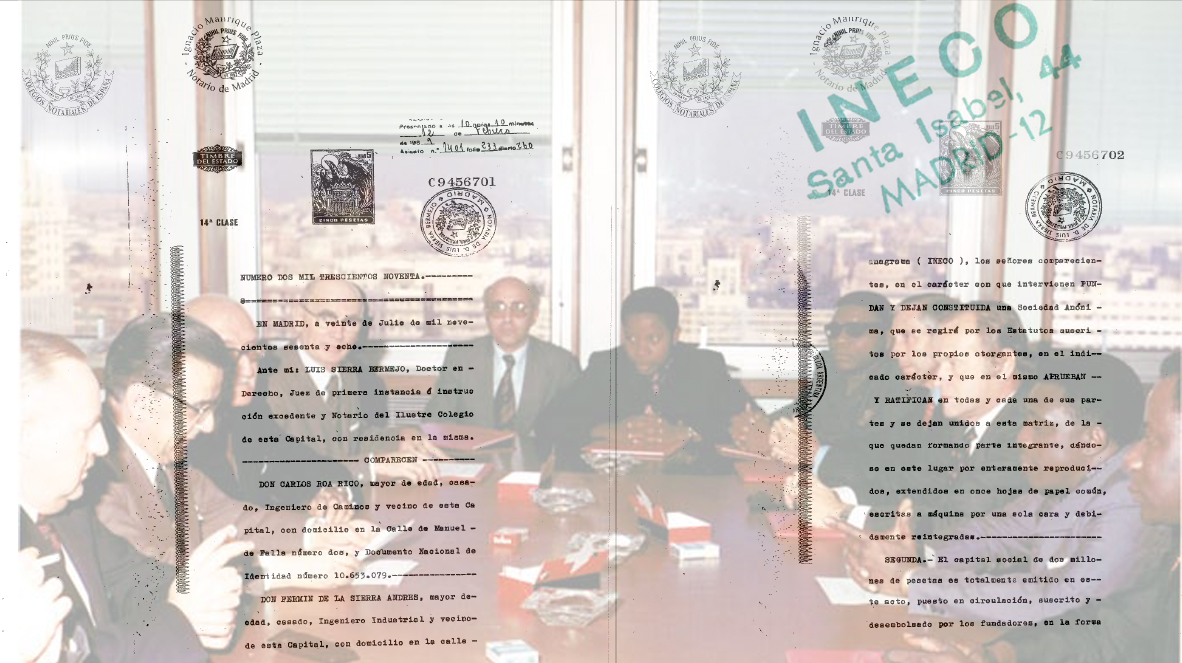
The year in which Ineco was born, 1968, marked a change of social and technological cycle in the western world: while the protests known as "May '68" were breaking out in France, the Space Race was beginning on the other side of the Atlantic: preparations were being made the arrival of man on the moon, which took place a year later, and the first satellites were launched. In Spain, steam locomotives stop running and the tourist industry grows, while in the UK and USA the album "The Beatles" reaches number one in the charts.
A year in which the young Carlos Roa Rico, professor and civil engineer, born in León in 1911, fulfilled his dream: to set up the first studio specialising in transport consultancy. Former director of Ferrocarriles de Langreo and former general director of Renfe, he was, as Julián de Antonio remembers, "a railway enthusiast, to which he devoted his life", and, in the personal treatment, "a man who was close, who listened, who always had five minutes to talk".
He was also a protector of the independence of the engineer and of technical training, to which technicians were required to devote 10% of their working hours: in 1972, "Friday afternoons", training sessions on a topic of discussion, were introduced.
At a time when the railway in Spain was languishing, with infrastructure in need of modernisation, Roa predicted that in the years to come it would play “'a very important role”, a prediction that proved to be right. This vision of the future permeated the newly born Ineco, at that time the only consultancy specialising in transport in Spain.
"It is absolutely untrue that the railway, having been the first modern mechanised transport, must necessarily be the first to go out of fashion. On the contrary, (...) in the great industry and the great city of the future, the railway will play a very important role". Carlos Roa Rico, interview in ABC, December 5, 1967
This pioneering spirit has continued over the years to the present day and has spread to all areas of activity as it has diversified and expanded: with the incorporation of aeronautics and roads in the mid-1990s, environmental studies in the early 2000s or, in recent years, those related to ports, digitalisation and ICT.
03
Bit by bit
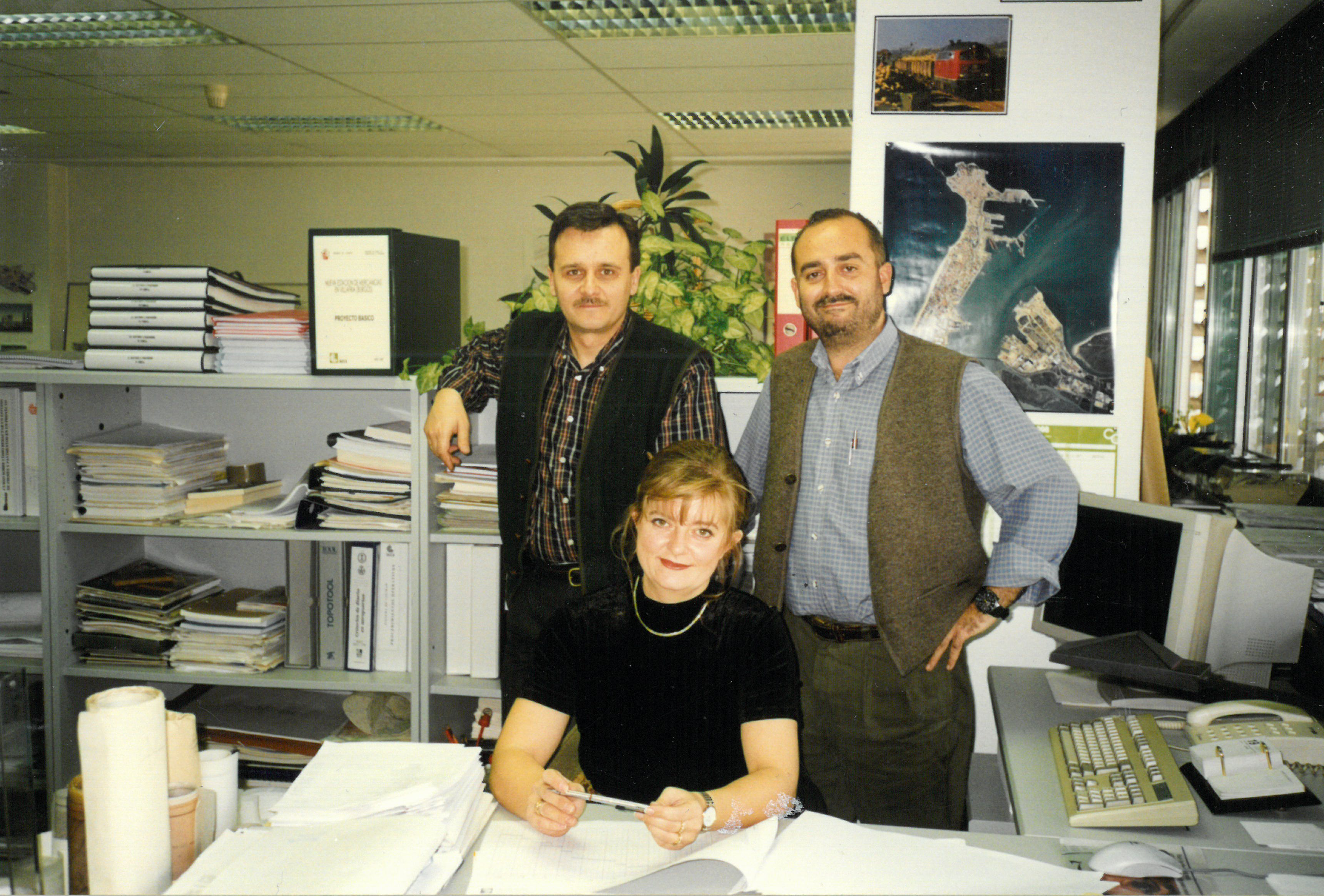
In 1972, there were fewer than 1,500 computers in Spain. One of them was Ineco's first computer-calculator, which was purchased in the same year: the Hewlett-Packard model 9830A, which had just been launched on the market. One of the first in-house computer developments was carried out with him, a BASIC layout programme called KILOMÉTRICO, which was used for the Madrid-Barcelona-Port Bou study.
With a single-line display and a 16kb ROM memory, it represented the beginning of the technological development of the company, which from 1982 began to computerise accounting. In 1983, Renfe created Tifsa (Tecnología e Investigación Ferroviaria S.A.), which Ineco acquired in 1999 to create the "Agrupación Ineco-Tifsa", until the definitive merger in 2010.
In 1983, the company acquired the first personal computer and in 1986, 3D mapping was used for the first time in Spanish engineering with the NAFA (In Spanish, New Railway Access to Andalusia) project.
As computer capacity increased in the following decades, increasingly specific and sophisticated applications were developed for all kinds of pioneering uses: rail traffic modelling, inventories, track design and assembly, airport easements, etc.
"There may be different interests and points of view, but only the scientific method and the right technique, applied by experts, can provide a solution to transport problems". Ineco advertising, 1976-77.
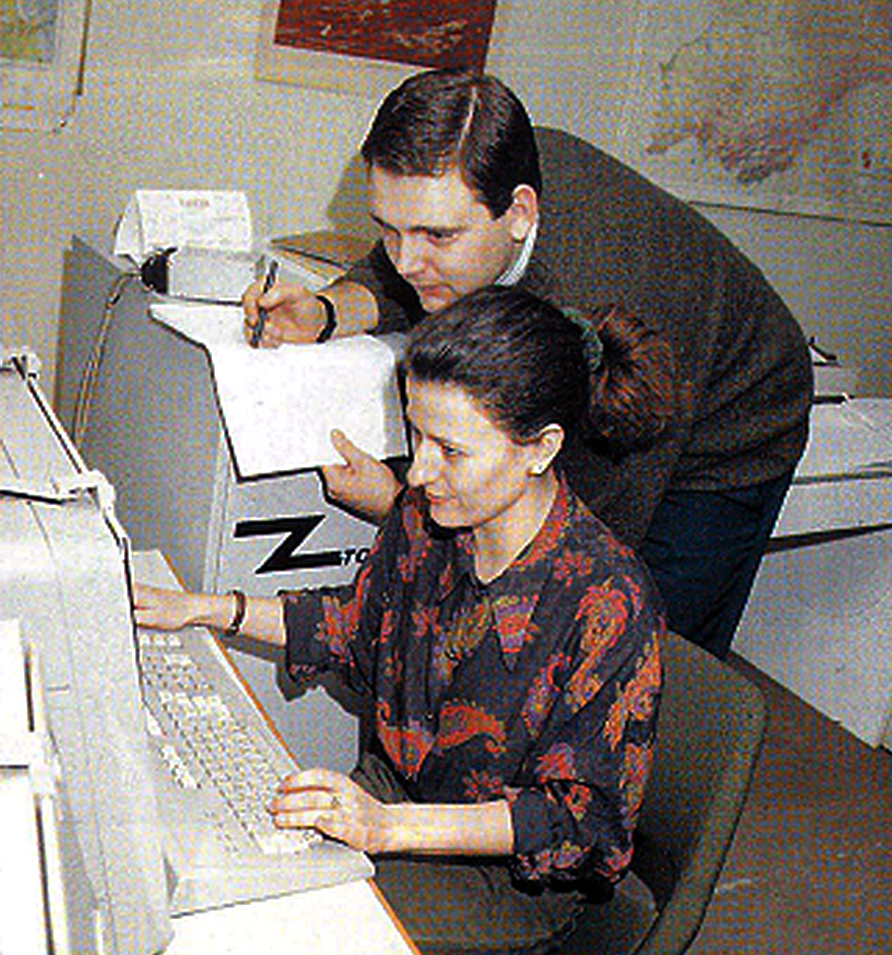
Few people know that Ineco, which is currently carrying out 40 projects with more than 25 institutional clients for the digital transformation of the public administration, set up the first Early Warning Centre for Computer Viruses in Spain in 2000.
In 2010, the company began to use BIM (Building Information Modelling, an online collaborative work system in real time on a 3D model) in its own projects, while leading its implementation in Spain.
For Miren Marzábal, remote work and automatic document processing are part of her daily routine. "New technologies, social networks and developments in this regard have both positive and negative aspects. I think the most important thing is a good education on the subject, allowing us to use them as tools to improve our lives and our work," she reflects.
For his part, Julián de Antonio underlines the usefulness of technology in his work: "I experienced the change from work done completely hand made to AUTOCAD". Although it was a gradual process "the first processors were very slow", he recalls, overall, "the technological evolution over the years has been spectacular".
Ineco, which has been the Administration's own tool since 2008, currently has a team of 800 ICT (Information and Communication Technologies) specialists and fifty of its own software developments, 16 of which incorporate artificial intelligence.
04
It's a wonderful journey
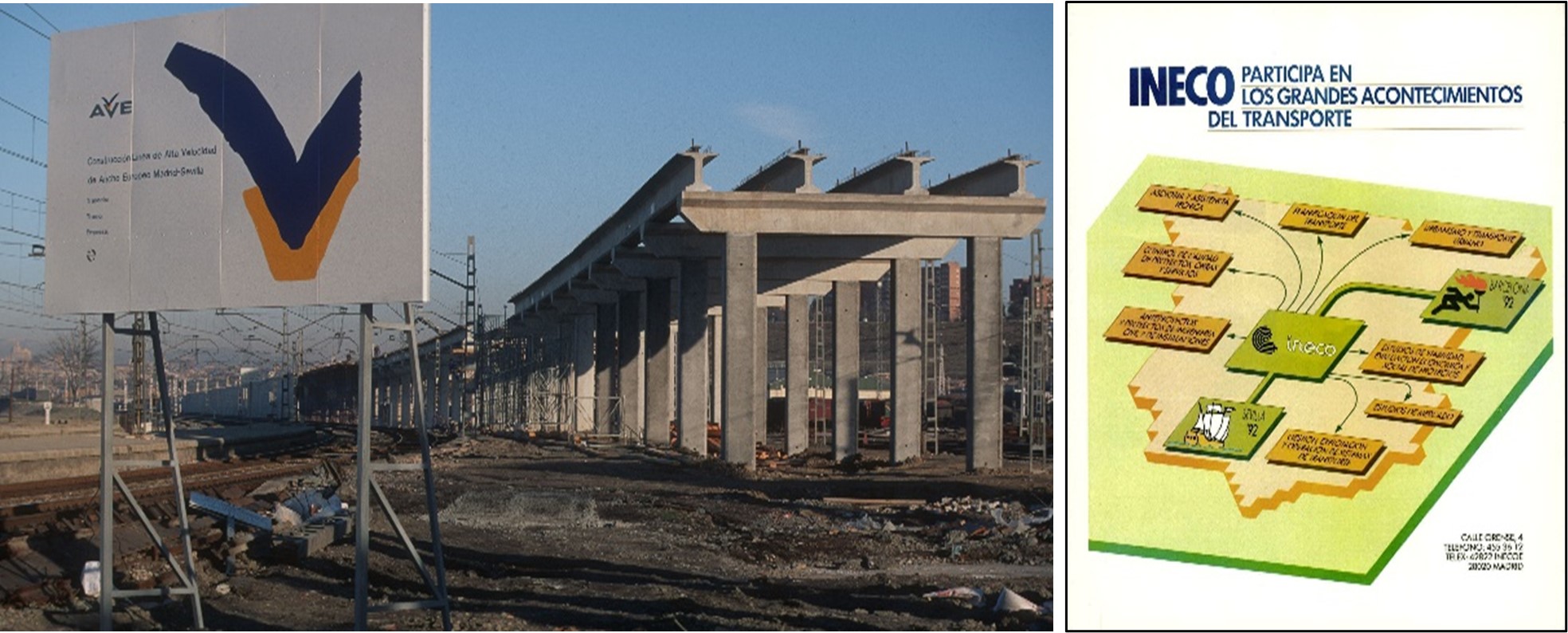
April 1992: Spain is immersed in the celebration of major events (the Olympic Games in Barcelona, the Universal Exhibition in Seville and the Fifth Centenary of the Discovery of America, for which Ineco also carried out some work and opened its offices in Seville and Barcelona) and aspires to project a new international image reflecting the modernisation of the country.
A group of young engineers from Ineco/Tifsa travel on board the first high-speed train to cover 320 km. of the route between Madrid and Seville, shortened by 100 kilometres with respect to the Despeñaperros pass thanks to the new bypass through Brazatortas that they themselves have planned under the guidance of their mentors at Renfe.
"The incorporation of Spain into the European Economic Community, the Railway Transport Plan, the awarding of the 1992 Olympic Games to Barcelona and the holding (...) of the Universal Exhibition in Seville, profoundly disrupted the normal market realisations and expectations. Indeed, engineering activity, which already increased significantly in 1986, is set to almost triple in this and the coming years." Presidency communication, Ineco, 1987.
They have spent the last four years working intensively on the project and carefully observe the oscillations of a glass of water on the table to calculate the camber of the curves and count the catenary poles per minute to estimate the speed. Despite all the uncertainties, the project has been successfully completed and marks a milestone for the Spanish railway sector as a whole and also for Ineco.
Thus began the company's experience in the Spanish high-speed network (the second largest in the world after China), which today has led it to participate in major projects in Spain and around the world: HS2 in the United Kingdom and Rail Baltica in northern Europe, both of which are currently underway or the Makkah-Madina line in Saudi Arabia, which is now operational.
The knowledge collected in the following years in multiple technical fields (such as the European signalling and communications system ERTMS, inspections and load testing of structures, initiated by Tifsa in the 1980s, and the design and construction of large tunnels and viaducts) generated a unique technical background that continues to be applied in multiple projects, such as the Silvertown road tunnel in London or the remodelling of the Atocha railway complex.
With the same international vocation with which it was born 55 years ago (its first studies were for railways in Latin America and Africa), Ineco continues to work to improve the mobility of people and goods in all modes and areas of transport.
In the railway sector, which is still the company's largest volume of activity to date, Ineco continues to collaborate with Adif in the improvement and maintenance of the Spanish conventional network, and in international projects such as the modernisation of the commuter trains in Sydney (Australia) or the metro systems in Mexico City and Panama, among others.
Aeronautical activity began in 1995, following the entry as a shareholder of Aena, created in 1991 to manage the expansion of Spanish airports, which at the time were suffering from saturation problems due to the increase in tourism.
Today, Ineco is supporting Aena in areas of great importance such as airport safety, Master Plans and Special Plans, evaluation of noise and noise pollution, or change management in airport infrastructure. Abroad, the new Amsterdam-Schiphol terminal (Netherlands) and the new airports of Kasteli, Greece, and Santo Antão, in Cape Verde, among others, are being designed; and supervises the expansions of those in Kuwait and Lima (Peru). In air navigation, it collaborates with Enaire in the improvement and management of Spanish airspace, design of flight procedures, improvement of operational safety and in the modernization and evolution of CNS and ATM systems and facilities.
And, since the beginning of the 2000s, in projects linked to the European Galileo satellite navigation system, for which it has been operating the GNSS Service Centre (GSC) since 2016, located in Torrejón de Ardoz (Madrid).
In 1995, the company's first road division was also created, which today has a team of more than 280 people. Since then, Ineco has been collaborating in the maintenance, improvement and expansion of the Spanish network and abroad, among other works, it manages the national plans to improve roads and ports in Costa Rica and, since 2011, it has managed and supervised the concession of the Guadalajara-Colima motorway in Mexico,
In the field of ports, the first studies date back to the 1970s. Work is currently being carried out for 16 of the 28 port authorities, particularly on rail access.
Throughout its history, Ineco has also carried out countless architectural works: more than 20 airport and port terminals, towers and control centres, more than 320 stations and other railway facilities. Also, improvements and remodelling of official buildings. Today the area has a team of more than 140 professionals.
05
A blue marble

The 1970s were marked by the energy crises of 1973 and 1979, which resulted from oil price hikes. In those years, Spain's dependence on crude oil to generate energy was almost twice as high as it is today.
In 1974, the government approved various energy saving measures, including some that have survived to this day, such as the time change and the speed limit on the road for passenger cars (until then only limited to freight vehicles) Over the years, Ineco has carried out numerous studies on energy efficiency and savings in the industrial and, above all, transport sectors, for entities such as Renfe or the Ministry of Industry's Centre for Energy Studies.
Collective environmental awareness, globally and locally, has evolved greatly over the past decades. Miren Marzábal has grown up aware of the need to fight climate change and protect the planet. For her, it is "as much an individual responsibility of the citizen, with day-to-day actions such as recycling, using public transport, etc., as it is of big business and governments".
The year 2050 is now the target set by the European Union to reduce greenhouse gas emissions, which cause catastrophic global warming, to zero. There is no time to lose, and therefore, as an intermediate target, by 2030 this reduction should already be 55% (initially set at 40%), through a package of measures called "Fit for 55".
It was precisely with Spain's entry into the EEC in 1986 that the company began to carry out informative and environmental impact studies as required by the new European legislation. Shortly afterwards, it began its first integral project management on a major urban railway integration project: the Green Corridor of Madrid (1989-1996). Services that will provide in the deployment of the high-speed network, in the extensions of all Spanish airports and in the modernisation of the road network.
Abroad, work is being carried out such as the environmental studies for the UK's high-speed rail phase 2 (2016), Saudi Arabia (since 2012) and Egypt (2017), and the Environmental Sustainability Plan for Dammam airport in Saudi Arabia (2020), among others. In air navigation, since 2005-2006, Ineco has participated alongside Enaire in projects linked to European programmes such as SESAR (Single European Sky ATM Research), which aims to optimise airspace and reduce emissions.
Currently Ineco has developed new specific business lines in environmental matters: energy efficiency and renewable energies, with works for Adif and Enaire or the drafting of the Tunnel Lighting Plan for the general road network; and infrastructure resilience to climate change: in Spain, studies have already been carried out for more than 50% of the railway infrastructure and in numerous airports, and Climate Proofing for the Rail Baltica high-speed corridor, a requirement of the EU to obtain financing. In addition, the company is collaborating in the development of a new renewable energy source: the Ion Module allows energy to be generated from the corrosion of metals and produces green hydrogen in the process.
06
Looking towards the future… together
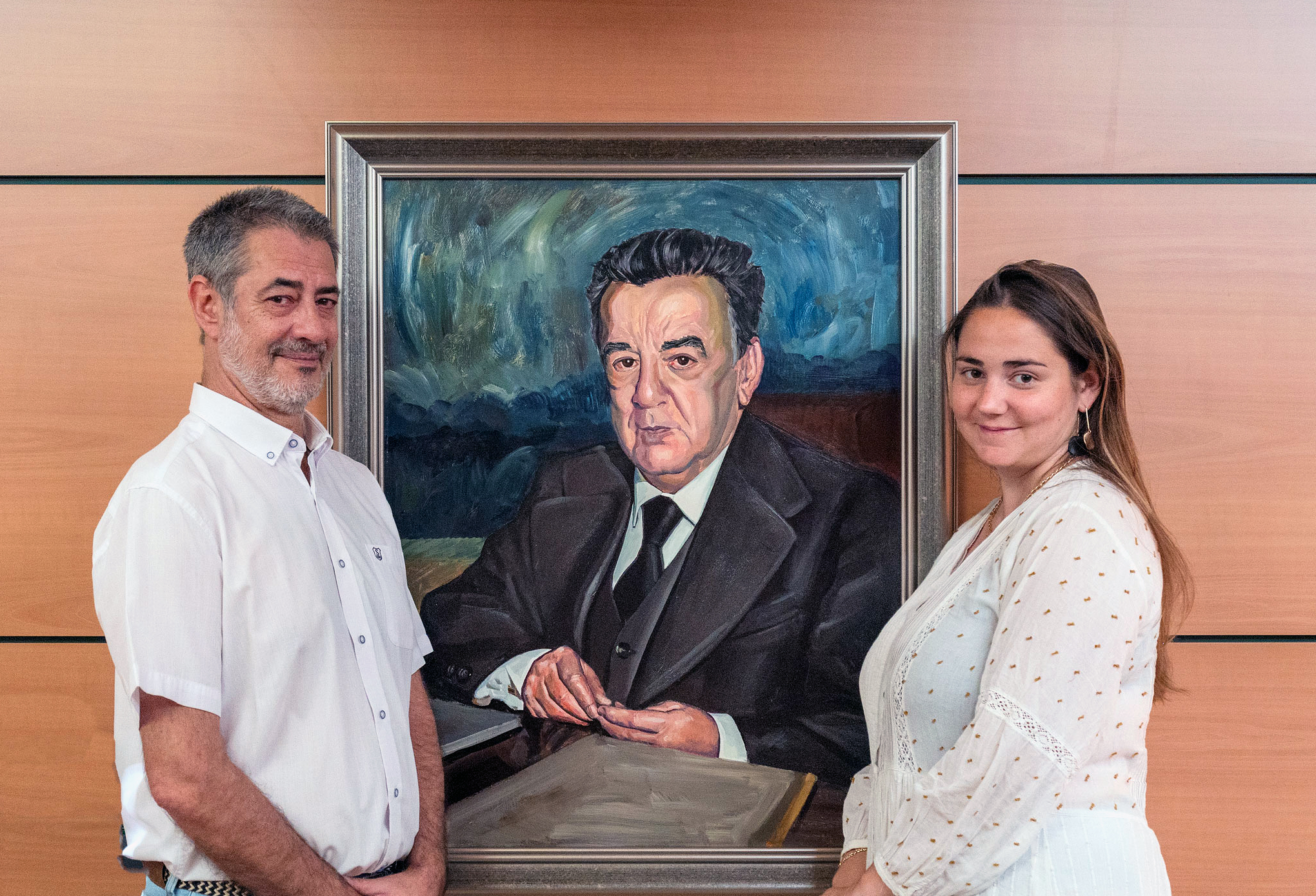
Five years from now Miren Marzábal hopes to "continue learning and growing professionally," and celebrating the company's 60th anniversary.
More than five decades have passed since Carlos Roa declared that his intention in creating Ineco was "to create a stable and permanent entity that will remain at the highest scientific level and exercise maximum practical wisdom in terms of transport economics and coordination".
Have his expectations been met? For Julián de Antonio, there is no doubt that the founder "would be overjoyed to see Ineco now. It's like a small village has become a capital city!”






